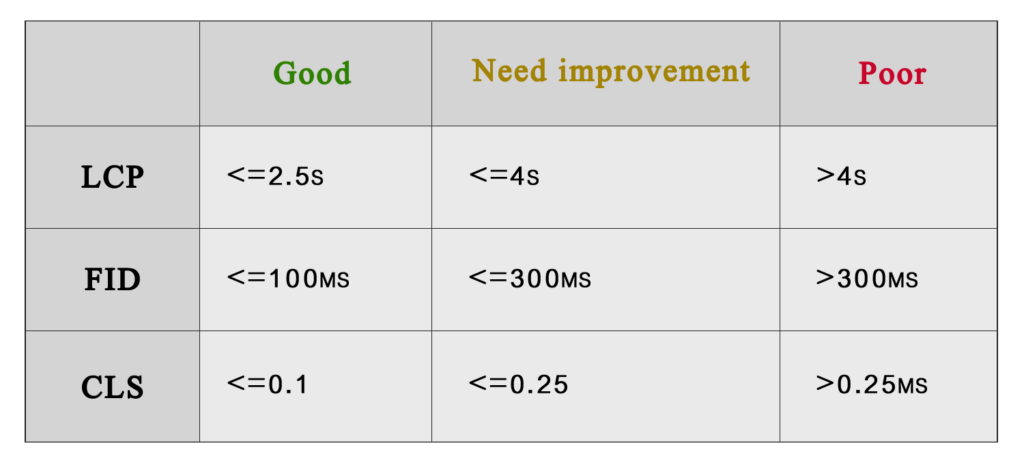In an era where a Google search often precedes a doctor’s visit, it’s crucial for medical professionals to understand the digital landscape. This isn’t merely about peppering your website with medical terms; it’s about crafting a holistic SEO strategy that resonates with potential patients from the moment they hit ‘search.’ Whether you’re a local general practitioner or a specialist with broader ambitions, in today’s digital age, effective SEO for doctors is not optional; it’s essential.
Whether you’re a general practitioner seeking local prominence or a specialized expert looking to broaden your reach, the importance of a well-executed SEO strategy can’t be overstated. Gone are the days when a medical degree and a physical clinic were sufficient to establish credibility.
Now, your digital footprint acts as your second waiting room. Ready to transform this virtual space into a hub of patient engagement and optimized outreach? The blueprint to your digital success starts here.
Local SEO: Laying the Foundation for Doctors
Local SEO is crucial for doctors aiming to enhance their search engine performance, primarily because patients often rely on local practice and physician listings when selecting healthcare providers.
A common pitfall many practices encounter is partnering with an SEO agency that focuses solely on achieving high search engine rankings, overlooking the importance of targeting a local audience.
Being the top result for a search query like “what are the signs of a herniated disc?” is inconsequential if the person searching resides outside your service area—they won’t become a patient. Therefore, it’s essential to have your local SEO in order.
SEO agencies specializing in healthcare can significantly enhance local SEO for doctors, making it easier for potential patients to find your practice in local search results.
Here’s how they go about it:
Step 1: Claim Your Practice and Doctor Listings
Start by focusing on your Google Business Profile (GBP) listings. Initially, create individual GBP listings for both your practice and the doctors within it. Take control of the information and details to ensure they are accurate and up-to-date. The only exception to this rule is if your clinic is a single-location operation run by one individual or company. In such cases, Google recommends creating just one GBP listing.
Step 2: Build Your Listings
Simply having the listings isn’t enough; you need to enrich them. This involves filling out forms with comprehensive details, such as the services you provide and the types of insurance you accept. Additionally, it’s crucial to upload a sufficient number of photos and take advantage of often-overlooked features like posts. Research has shown that a fully completed profile significantly enhances your chances of attracting new patients to your practice.
Step 3: List on Key Directories
After you have finished creating a detailed listing, you should ensure that this information is added to various business directories and healthcare directories. This will make it easier for patients who are searching for doctors to find your listing. When we talk about directories, we are referring to common ones like Google Business Profile.
However, it also includes popular directories like Yelp and Apple Maps, where many people go. But it also means ensuring that your practice or doctor’s information is listed on healthcare directories like WebMD, CareDash, and Vitals.com.
Here’s a list of local directories for your medical practitioner website:
Also Read: Affordable SEO Services for Small Businesses- 2024 Guide
Step 4: Seek Reviews from Patients
After adding your business information to your chosen directories, it’s crucial to gather reviews from patients. As a doctor, aim for numerous positive reviews that are as close to a perfect 5-star rating as you can get. These reviews significantly sway a new patient’s decision when choosing a healthcare provider.
To streamline the collection of favorable reviews, consider implementing an automated system that routinely checks for and requests reviews.
Keyword Research
When crafting a robust local SEO plan, it’s equally important to develop a strategic approach for identifying the right keywords to target for your medical practice as you broaden your SEO initiatives. In straightforward terms, not all keywords will draw in patients. Let’s explore how to go about it.
Step 1: Understand Patient Intent
Understanding what patients want is the key to making both SEO and Google Search Ads successful. This means you need to know the difference between when patients are almost ready to choose a doctor and when they are just seeking information. Here’s what we found out about “high intent” searches – these are people who are looking to book an appointment immediately.
- Doctor or Practice Name Searches: Patients usually search for practice or doctor names when they want to book an appointment. They know about you, or they might have heard about you from someone else.
- Local Searches: When a patient looks for a “brain surgeon near me” or a “liver specialist near me,” it means they are almost ready to make a decision and book an appointment.
- “Medium intent” searches refer to patients who have done some research and are closer to booking an appointment, but may not be completely prepared yet.
- Treatment Searches: Patients in search of treatment options are highly motivated to find help. Often, by the time individuals are exploring treatments, they’ve already educated themselves about their medical condition and are now seeking solutions.
- For instance, someone searching for “lumbar discectomy” is likely gathering information to determine whether they should undergo this procedure. Earning their trust typically paves the way for them to schedule an appointment.
- Condition Searches: These are when a patient is looking for information about a diagnosis they have received. For instance, someone who is looking up “herniated disc” has already been tested and diagnosed by a doctor. They may not know about the different ways to treat their condition, so they probably don’t search for treatment options as much.
- And finally, “low intent” searches usually mean that the person is not yet ready to make an appointment.
- Symptom Searches: These patients don’t have a doctor’s diagnosis yet or know how they can be treated. We observe that many medical practices waste time and energy focusing on keywords that indicate a low level of intention.
Step 2: Make a List of Target Keywords
Now, you need to make a list of keywords that are specifically related to your medical practice speciality. We suggest using a tool like SEMRush or Ahrefs to find good keywords. You can begin with a list of words related to your brand name, the treatments you provide, and the conditions you focus on.
These words can be input into a tool that will generate a long list of keywords and keyword phrases for you to study. Once you have a longer list, you should find important words by examining the following:
- Traffic: Which words or phrases are searched very often each month? They should have enough people searching for them to be worth your time.
- Difficulty: Most of these SEO tools can tell you how difficult it is to rank for a particular keyword in the top 10 search results.
These will assist you in deciding which terms are most important to pursue. Your aim is to discover keywords that show strong intention and are popular, but not too challenging to rank for.
Content Strategy for Medical Practice
Now that you have a list of important keywords, it’s time to start creating content that focuses on those words. This will help increase the number of people who visit your webpage naturally.
Website Content
A vital component of your practice’s content is the website itself. It should be optimized for search engine optimization (SEO), featuring fast-loading pages and a mobile-friendly design. We recommend dedicating a separate webpage for each treatment and condition you offer, allowing you to focus on specific keywords relevant to those areas.
Additionally, create pages for each of your practice locations, complete with essential information such as contact details, maps, and other pertinent data. Lastly, ensure that each doctor in your practice has an individual profile page. This is important because patients often search for doctors by name.
Blog Posts
Writing blog posts that are relevant and focused on a specific audience is also an important way to create content. Here is how we suggest medical practices should approach blogging:
- Choose 3-5 Topics: Based on the main words you want to focus on, select a few areas to focus on. Please remember to include those words in the titles and content of your blog.
- Create a Schedule: Always make a plan for the next three months, so you know what to expect.
- Post Bi-Weekly: This is because posting monthly is not often enough. If you post every two weeks, you will be able to understand what works faster.
- Find What Works: After a few months, you should start to see people visiting your website from SEO. Some blog posts will be more successful than others. If you notice that a blog post is receiving a lot of visitors from SEO, it is better to update and improve that page instead of creating a new blog post. Updating your website’s content is often overlooked as a way to improve your SEO.
Video
Many medical practices do not realize how important it is to include videos in their content strategy. Why should you use videos? Because about 1/3 of all Google searches now show videos in the search results. Also, having videos on your website can increase something called “dwell time” on your pages.
This means that people spend more time on your site because they’re watching videos, and it shows that your page is interesting to them. This is important for SEO.
Lastly, we have observed that using videos helps more patients become potential customers. To put it simply, videos are a much better way to teach potential patients than text. The kinds of videos we suggest for medical practices to make are:
- Practice Overview: Tell patients about your practice and how you take care of them. You can also explain what makes you unique.
- Patient Testimonials: These are videos made by real patients who can prove that your practice is good. When other people see these videos, they will want to come to your practice too. Place the buttons on important pages where users can request appointments.
- Treatment/Condition Education: Another very important kind of video – these will help teach your patients about their condition and treatment options and prompt them to take necessary steps.
- Doctor Bios: These videos are significant and help patients trust their doctors more because they show them in real life. Patients can better understand who their doctors are, how they treat patients, and more. Don’t just create a video resume – also show empathy.
Social Media
Social media plays a crucial role in helping medical practices promote their content, primarily because it’s where most patients spend a significant amount of time online. This is also beneficial for SEO, as social media posts often appear in search engine results for relevant queries.
However, don’t expect your social media content to attract a large patient base instantly; that’s where paid advertising comes in.
To enhance online visibility, it’s recommended that medical practices post informative content on platforms like Facebook and Instagram at least twice a week, focusing on specific health conditions and treatments.
If you’re looking to expand your reach, consider venturing into YouTube or emerging platforms like TikTok, which can amplify your message without the necessity for paid promotions.
Website SEO Optimization for Medical Practice
One important aspect of SEO for any medical practice is how well the website is improved. We believe there are a few important things for medical SEO.
Core Web Vitals
Core Web Vitals are a bunch of measurements made by Google to decide whether a website is easy to use or not for the users. There are three important parts to it.
- Largest Contentful Paint (LCP): It measures how much time it takes for the main element on a webpage, usually a header image at the top, to finish loading.
- Cumulative Layout Shift (CLS): It refers to how much the elements on a webpage shift or move when viewed on a mobile device.
- First Input Delay (FID): It measures the amount of time it takes for a website to become interactive after it finishes loading.

Google is essentially giving a score to every page on your website based on the mentioned factors. These reports for your website can be found in a tool called Google Search Console.
Speed of Your Practice Website
In addition to Core Web Vitals, it is very important that your website loads quickly. This is essential because people will leave a website if it takes a long time to load. And there is a higher chance that people will become potential customers when your website loads quickly.
Actually, the longer it takes for a web page to load, the less likely people are to make a purchase. You can use Google’s Page Speed Insights tool to check the speed of your practice website. Make sure your mobile site loads quickly because many patients use their phones to browse.
Building Links to Practice Website
Backlinks, or links directing people to your website, serve as a measure of your site’s trustworthiness and credibility in Google’s eyes. This is often quantified as “domain authority,” a metric available on SEO tools like SEMRush and Ahrefs. However, not all backlinks are equally beneficial for medical practices.
To effectively attract more patients, it’s essential to secure backlinks from local websites associated with the cities where you aim to grow your patient base. Traditional link-building can be a time-consuming endeavor with uncertain outcomes.
For medical practices, it’s often not worth the investment of time. Instead, a more impactful source of authoritative links comes from online directory listings for your practice.
Also Read: Top 16 of the Best SEO Tools & SEO Reporting Software
Find Sponsorship Links
Another effective way to acquire valuable backlinks is by sponsoring local events or organizations. These authoritative links send location-specific signals to Google that other backlinks can’t match, potentially boosting your ability to attract more patients to your practice.
Measuring SEO Impact for Medical Practice
How can you evaluate the effect of all the SEO work you have done for your business?
Don’t Get Tricked by Rankings
Traditional SEO agencies often tout high search engine rankings as a measure of success. However, ranking number one for a specific term is pointless if it doesn’t drive traffic to your medical practice’s website.
Traffic is More Important Than Rankings
Instead, you need to check how many potential customers are visiting your website. This is a good sign if the keywords you want to rank for and the descriptions that appear in the search results are making people want to click on your website.
Leads Are Better Than Traffic
An even better approach is to assess whether the visitors coming to your website via SEO are actually converting into new clients. If that’s not happening, it indicates that those search queries may not be a good fit or are coming from locations that aren’t relevant for your patient base.
Wrapping Up
People commonly use search engines to find doctors, so if you want to attract these prospective patients to your website, having a specialized SEO plan is essential.
As we’ve discussed in this post, many of the generic SEO strategies employed by general agencies don’t yield effective results for medical professionals. These tactics may boost your search engine rankings, but they won’t necessarily convert into more patient visits. That’s why we recommend doctors partner with a specialized medical advertising firm that understands the unique requirements of the healthcare industry.
FAQs
How do I choose the right keywords to target for my medical practice?
Choosing the right keywords for your medical practice involves a careful analysis of search intent, patient needs, and your own areas of expertise. Utilize SEO tools like Google Keyword Planner or SEMrush to find relevant terms with high search volume, and consider incorporating both general and specific medical terms, as well as local qualifiers, to capture a broad yet targeted audience.
What are the common mistakes doctors make in SEO?
Common mistakes doctors make in SEO include neglecting local SEO elements like Google Business Profile listings, using generic or irrelevant keywords, and having poor website architecture that negatively affects user experience and page load speed. Additionally, failing to produce high-quality, patient-centric content and ignoring mobile optimization are other pitfalls to avoid.
What is the significance of Google Business Profile in SEO for doctors?
The Google Business Profile (formerly Google My Business) is crucial for doctors in SEO as it provides the essential local search exposure, appearing in Google Maps and local search results. Accurate and comprehensive GBP listings can significantly impact a patient’s choice of healthcare provider, making it an invaluable tool for driving local patient acquisition.
How can I track the effectiveness of my efforts for SEO for doctors?
To track the effectiveness of your SEO efforts, you can use analytics tools like Google Analytics to monitor key performance indicators such as organic traffic, conversion rate, and keyword rankings. Regularly reviewing these metrics alongside patient acquisition rates will provide a clear picture of your SEO campaign’s success.





























 RSS Feeds
RSS Feeds